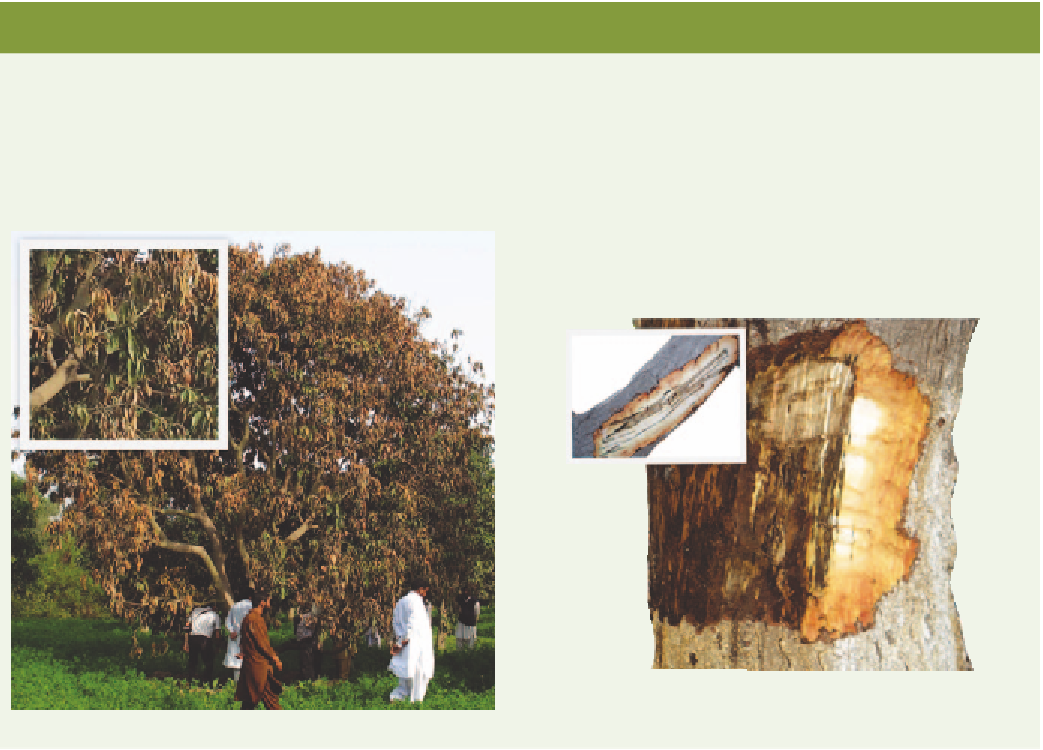Agriculture Reference
In-Depth Information
Strategic pruning after harvest, to force new growth, may
also reduce postharvest losses.
•
Preharvest fungicide sprays for anthracnose and
bacterial black spot control may reduce the incidence
of stem-end rot.
•
Avoid harvesting immature fruit.
•
Postharvest
•
Treat with hot water and fungicide as recommended
for anthracnose control (note that this is only partially
effective).
Cool fruit immediately after harvest to 10-12
C and
store in well-ventilated containers at this temperature
until fruit ripens. Lower temperatures may cause
chilling injury.
°
•
Fig 12.43 Stem-end rot fungi causing a canker in mango wood.
Management
Field
•
Ripen fruit at 18-20
C with ethylene to reduce the
variation in ripening between fruit and the amount
of stem-end rot development.
°
•
The disease is less prevalent in young orchards where
leaf litter and prunings have not accumulated.
Avoid drought stress during fruit development and
maturation.
•
Store ripe fruit at 10-12
°
C for a maximum of three days.
•
SUDDEN DEATH (QUICK DECLINE) - BIOSECURITY THREAT
Cause
The fungus
Ceratocystis fimbriata
( anamorph
Chalara
sp.) has been implicated as the main cause of the
disease. Other pathogens and factors may also
be involved.
Symptoms
Leaves lose their lustre, taking on a dull appearance,
then wilt while remaining attached to branches.
Wilting may begin on one side of the tree and later
involve the entire tree, or the entire tree may wilt at the
same time. Infected trees usually exhibit gummosis
through the bark of their trunks or branches. There
may be evidence of vascular discolouration when the
Fig 12.45 Bark removed from an infected trunk to show the
discolouration compared with healthy tissue. Inset: branch
symptoms.
Fig 12.44 Sudden death symptoms in a large mango tree.












